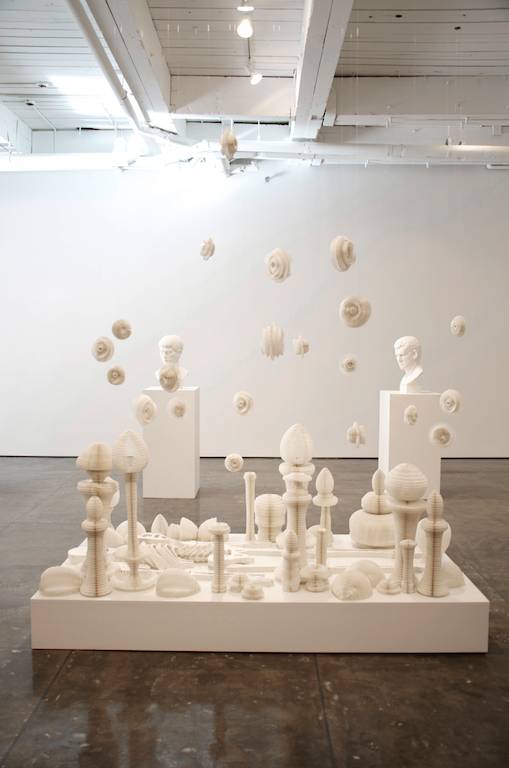“Tools of Study” Li Hongbo solo exhibition
Klein Sun Gallery, formerly Eli Klein Fine Art (525 West 22nd Street, New York, US) January 9-March 2, 2014
All of classical Western history is here: the Greeks, the Romans, the Renaissance meisterwerk like Michelangelo’s David and the haute bourgeoisie’s more recent household trinkets, “superb” objets d’art. So heavy, so self-important. But try pick one up and it goes all over the place like some crazy coiledy toy—the weight vanishes: puff!
Klein Sun Gallery opened its new exhibition space this month with a solo show of sculptor Li Hongbo’s accordion-like paper sculptures, including the deceptively realistic copies of classical and neo-classical marble and porcelain busts, the paper composition based on the structure of traditional Chinese “gourd” decorations. It’s fun and seductive, and though there is an element of gimmick to it (precisely the reason why it is so seductive), implicit also is an equally elegant critique.

For paper is the Chinese invention par excellence. It is the stuff of books and all their histories, philosophies, cultures, sciences, law, government and stories too. It is also the stuff of money, still. And it is one of the three elements in the game of Rock, Paper, Scissors, according to Ming Dynasty writer Xie Zhaozhi (谢肇淛; fl. ca. 1600, itself an ancient game dating back to the Han Dynasty called shoushiling (手势令), literally hand gestures or commands). Here, the paper more than covers the rock—it inhabits it. Far from becoming real, like Galatea, though, these marble ghosts metamorphose into paper dragons. The signs and cliches of Western culture gone, shown to be but paper screens until it springs back into place, perfectly camouflaged again. These strange hybrid animals of East and West play to, but also with us. What was Europe’s identity—its classical “soul,” the transformations of its industrial revolution…and its accompanying imperialism, become nothing.


